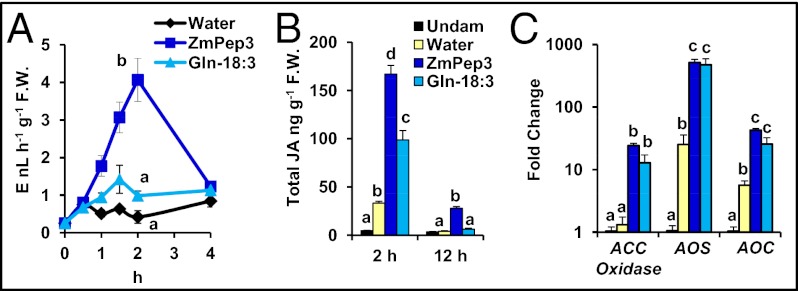Fig. 2.
ZmPep3 has similar activity to the potent insect-derived elicitor, N-linolenoyl-L-glutamine (Gln-18:3), in activating phytohormone signals. (A) Emission of ethylene (ET) in response to treatment with water (black), ZmPep3 (dark blue), or Gln-18:3 (light blue). (B) Jasmonic acid (JA) in undamaged leaves (black) vs. leaves treated with water (yellow), ZmPep3 or Gln-18:3. (C) Relative expression of genes encoding biosynthetic enzymes for ET (ACC oxidase) and JA (AOS, AOC) 2 h posttreatment as determined by qRT-PCR. Statistics were used to compare plant tissues that were damaged and treated with either water, ZmPep3, or Gln-18:3 each applied at 2 nmol⋅g−1 FW. Within each plot, different letters (a–c) represent significant differences between mean values (n = 4, ± SEM; all ANOVAs, P < 0.005; Tukey test corrections for multiple comparisons, P < 0.05).

